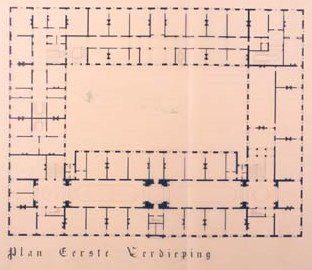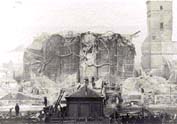The Hanseatic League in Antwerp
The term Hansa dates from the Middle Ages and refers to a federation of merchants who protect each other. The German Hanseatic League was the most important one by far. It protected and defended the trade interests of German and other North-European cities in the Baltic and on the North Sea. Hanseatic cities traded goods such as grain, wood, salt, fish, beer, wine, bees' wax, cloth and furs. Their goods were mainly shipped by sea and the location of cities such as Antwerp played a vital role in this. In the fifteenth century, the German Hanseatic League already owned two buildings in Antwerp but these soon proved too small.
After difficult negotiations between the Hanseatic League and the town council, both parties decided to build the Hanseatic House shortly after 1550. They appointed Cornelis Floris De Vriendt as architect. The result was a building in a late-Renaissance palazzo style with a rectangular floor plan, of 80 by 62 metres and three floors. The cellar and ground floor were used as storages, while the upper floors were used as residences and offices by the merchants.
After the fall of Antwerp in 1585, the city no longer was a trading metropolis. The Hanseatic House was no longer used as a trade centre. Instead it became a warehouse, barracks, a military hospital and even served as a Protestant church. The Hanseatic cities owned the property until 1863 after which ownership was transferred to the Belgian state. In 1893 it burnt down.





